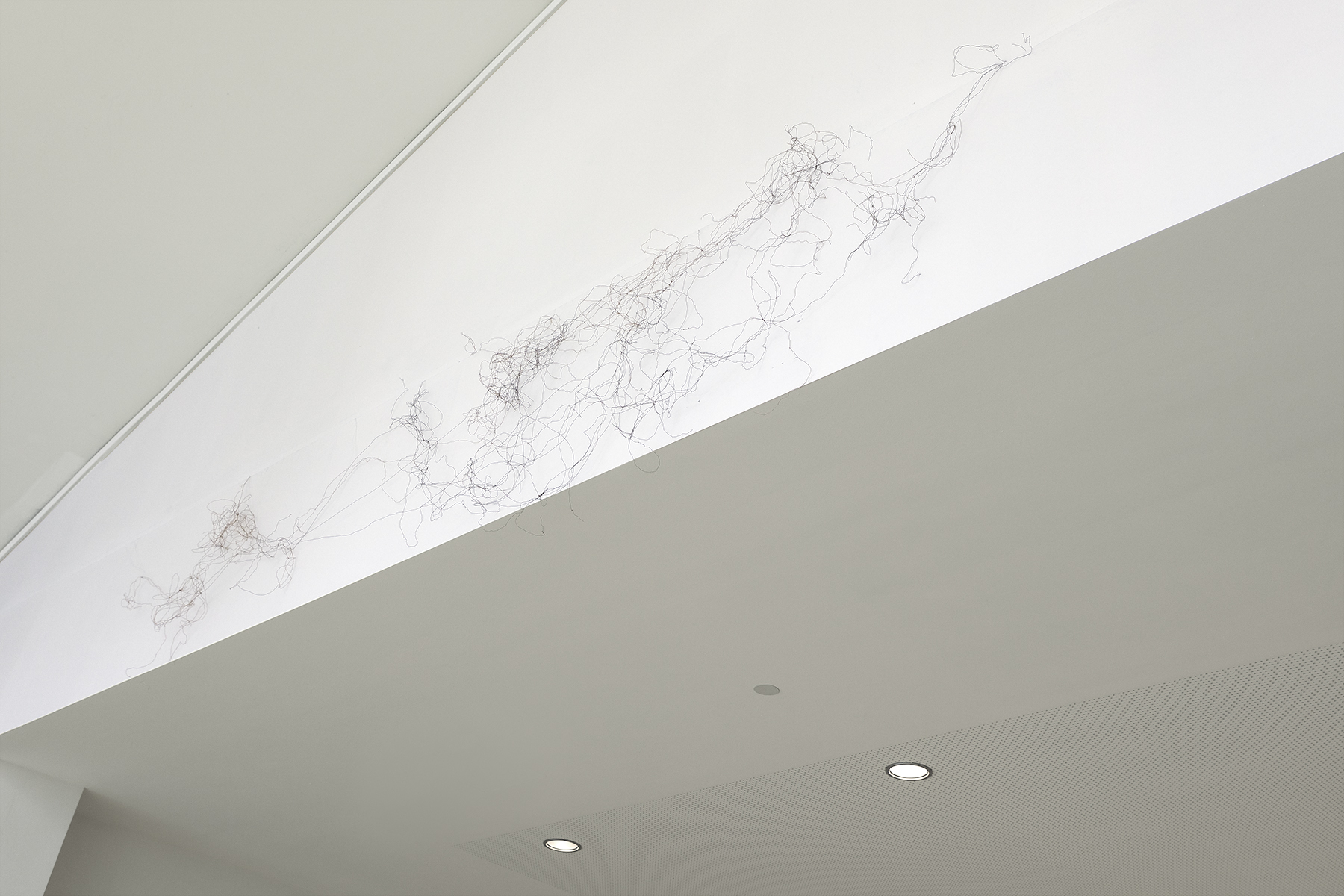The familiarity of the pattern II


›The familiarity of the pattern II‹ Installation, Copper wire, 2016;
Tools of Enlightenment, European Forum Alpbach, 2016
Ausgangspunkt für Elisa Schmids raumgreifende Zeich- nung aus feinem Kupferdraht ist das sogenannte Wiener Geflecht, wie es z.B. Thonet oder Kohn für die Sitz äche von Stühlen eingeführt haben und das bis heute verwendet wird. Das ursprünglich aus sechs Schichten aufgebaute Wabengflecht wird zum Symbol für das Muster als maßgebliches Element handwerklicher Arbeit. Aber die Künstlerin assoziiert auch das Verhaltensmuster, das wir verinnerlicht haben, das einer Erziehung oder einer Tradition entspringt, nach welchem
wir handeln, weil es uns vertraut ist – nur manchmal ist es erforderlich, es aufzulösen. In diesem Sinne hat Schmid ihre Geflechte wieder aufgetrennt und das vormals geometrische Gebinde in abstrakte Gebilde zerlegt, die Spuren des Flechtens bleiben ihm eingeschrieben.
The starting point for Elisa Schmid's expansive drawing made of fine copper wire is the so-called Viennese wickerwork, as introduced by Thonet or Kohn for the seat of chairs, which is still used today. The honeycomb mesh, originally made up of six layers, becomes a symbol for the pattern as an essential element of craftsmanship. But the artist also associates the pattern of behaviour which we have internalised, which originates from an education or a tradition according to which we act because it is familiar to us – only sometimes it is necessary to dissolve it. In this sense, Schmid has reopened her wickerwork and broken down the formerly geometric bundle into abstract structures, the traces of wickerwork remain inscribed in it.
Text by Ruth Horak